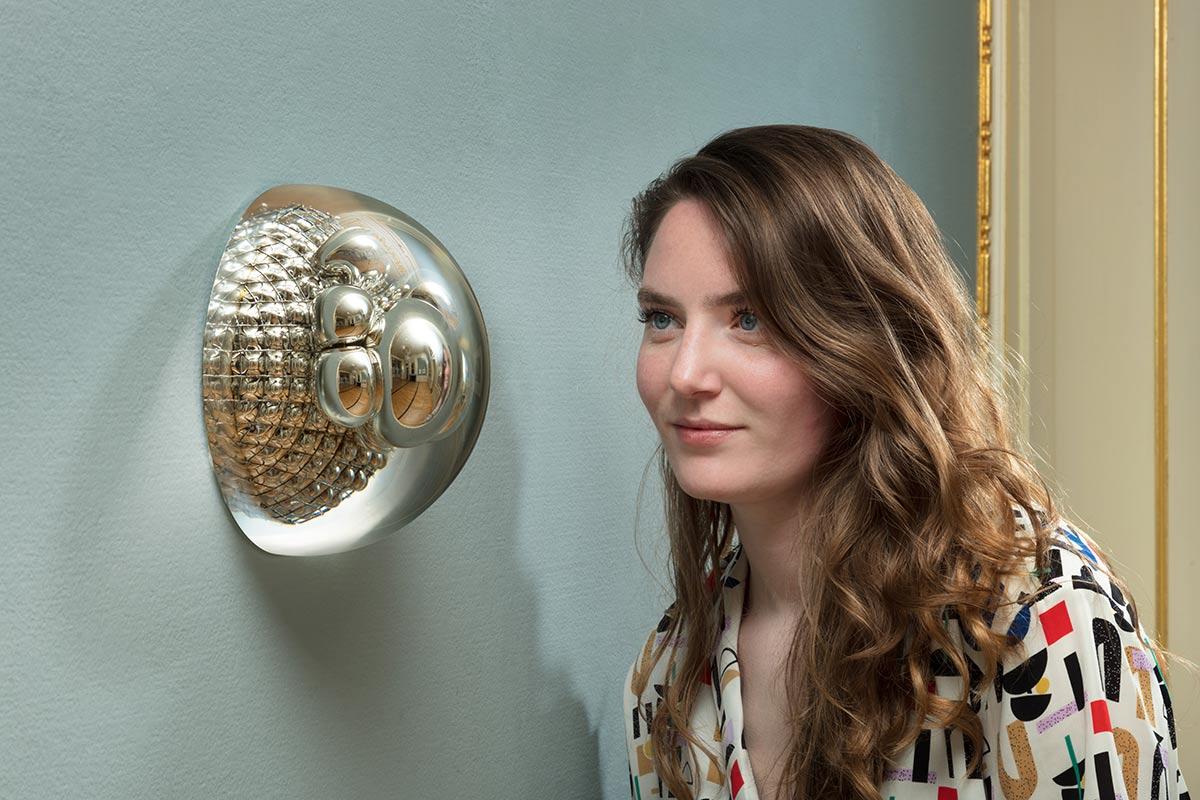
25 December 2022
We use cookies and similar technologies on this website to analyze visits and to show you relevant messages on social media. By clicking 'Accept all' you give permission for their placement and for the processing of personal data obtained in this way, as stated in our privacy & cookie statement.
Our privacy & cookie statement:
Below you can choose which types of cookies you allow on the Escher in The Palace website.

A remarkable self-portrait by Rembrandt is on display at Escher in The Palace from 29 November until 29 January. It is a self-portrait with a stormy history, that disappeared off the radar for many years and has now returned to the place where it hung for a long time in the nineteenth century. This painting can be seen in the royal ballroom of the palace, amid M.C. Escher's prints. Despite the obvious link between this self-portrait by Rembrandt and Lange Voorhout Palace, there also appear to be undeniable connections between Rembrandt and Escher.
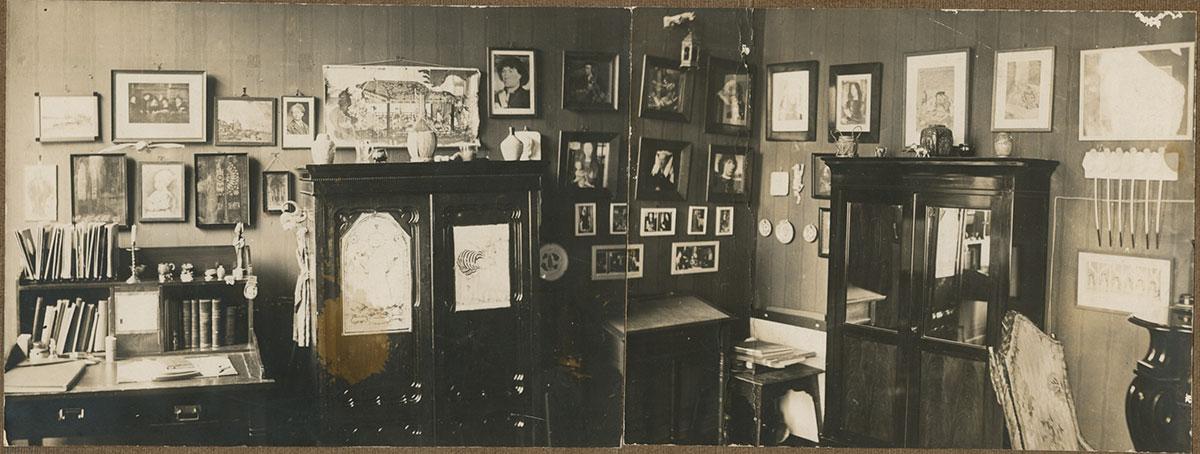
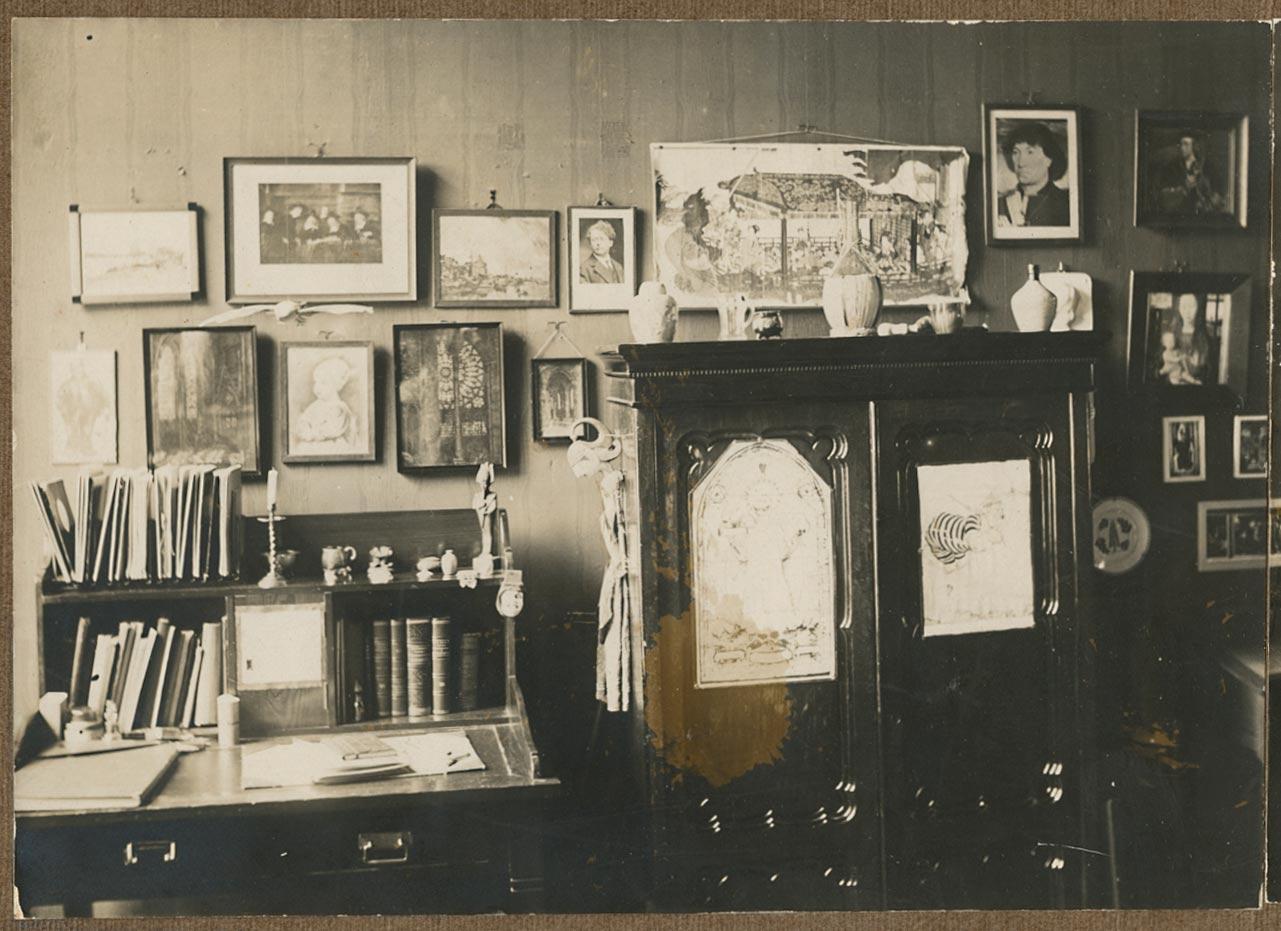
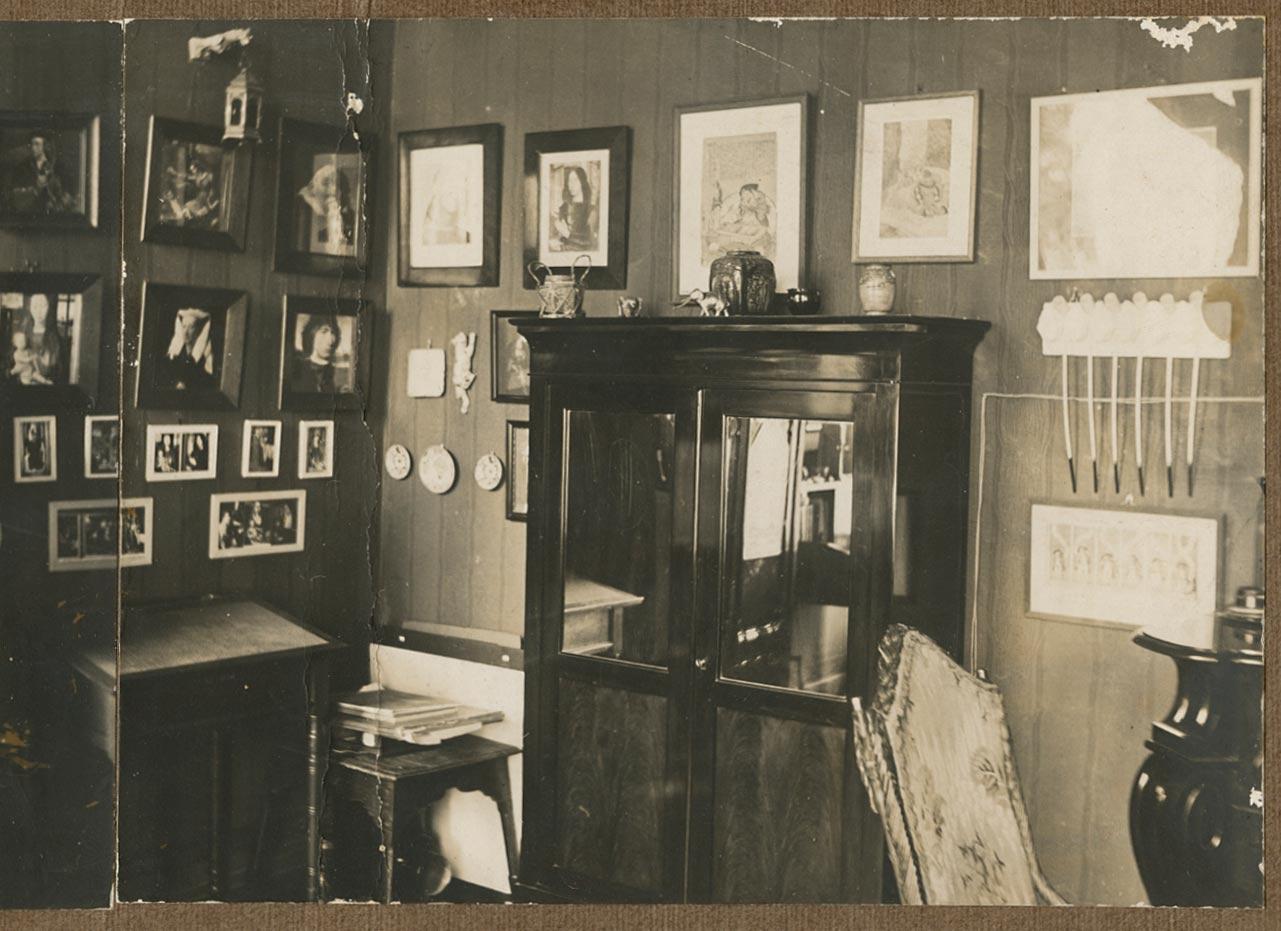
Escher's interest in Rembrandt began early on. He was intrigued by art as an adolescent, but had little curiosity for emerging movements such as Cubism and Dadaism. His preferences lay with the Late Middle Ages and the Renaissance. As well as with Rembrandt. As a 17-year-old, he already had a reproduction of one of Rembrandt's most famous paintings, The Sampling Officials (1662), hanging in his room in Arnhem.
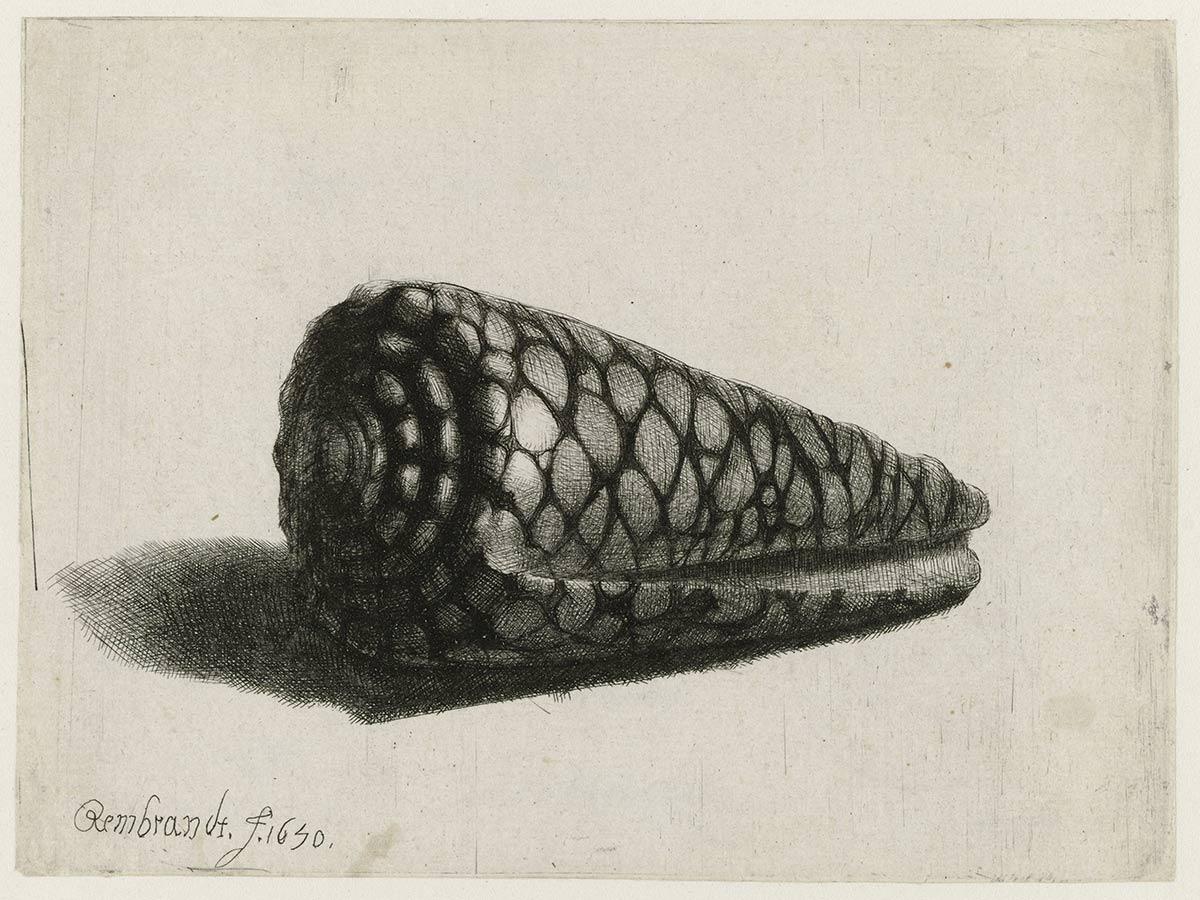
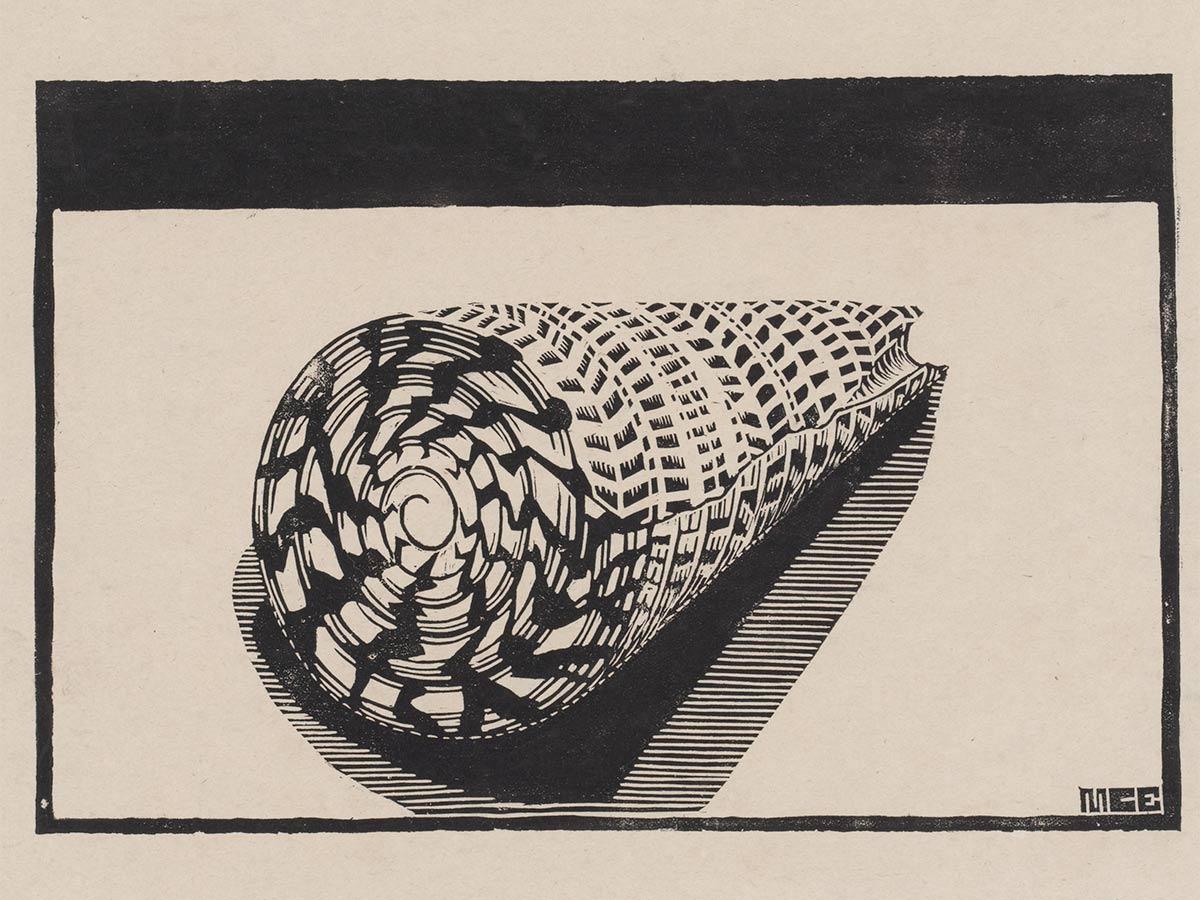
A few years later, as a fledgling artist, he created a woodcut of a shell that looks remarkably like one of Rembrandt's etchings. This marbled cone snail (Conus marmoreus) has a conical shape with a distinctive pattern that caught the attention of both artists. Although Rembrandt was a lot older and more experienced at the time he made the etching, he made the same mistake as Escher: cone snails only exist in right-handed form in nature. Both Rembrandt and Escher depict the snail turning to the left.
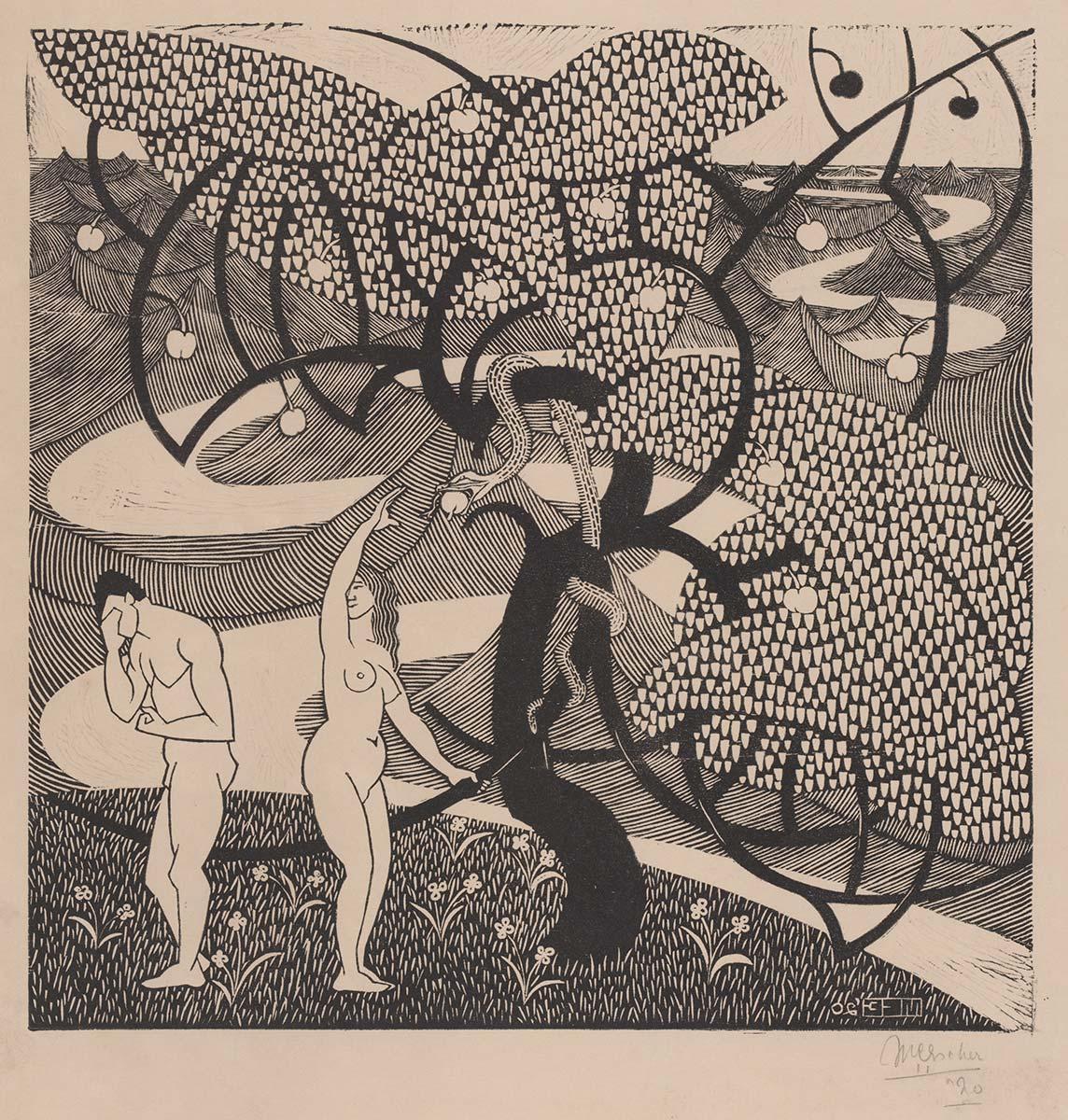
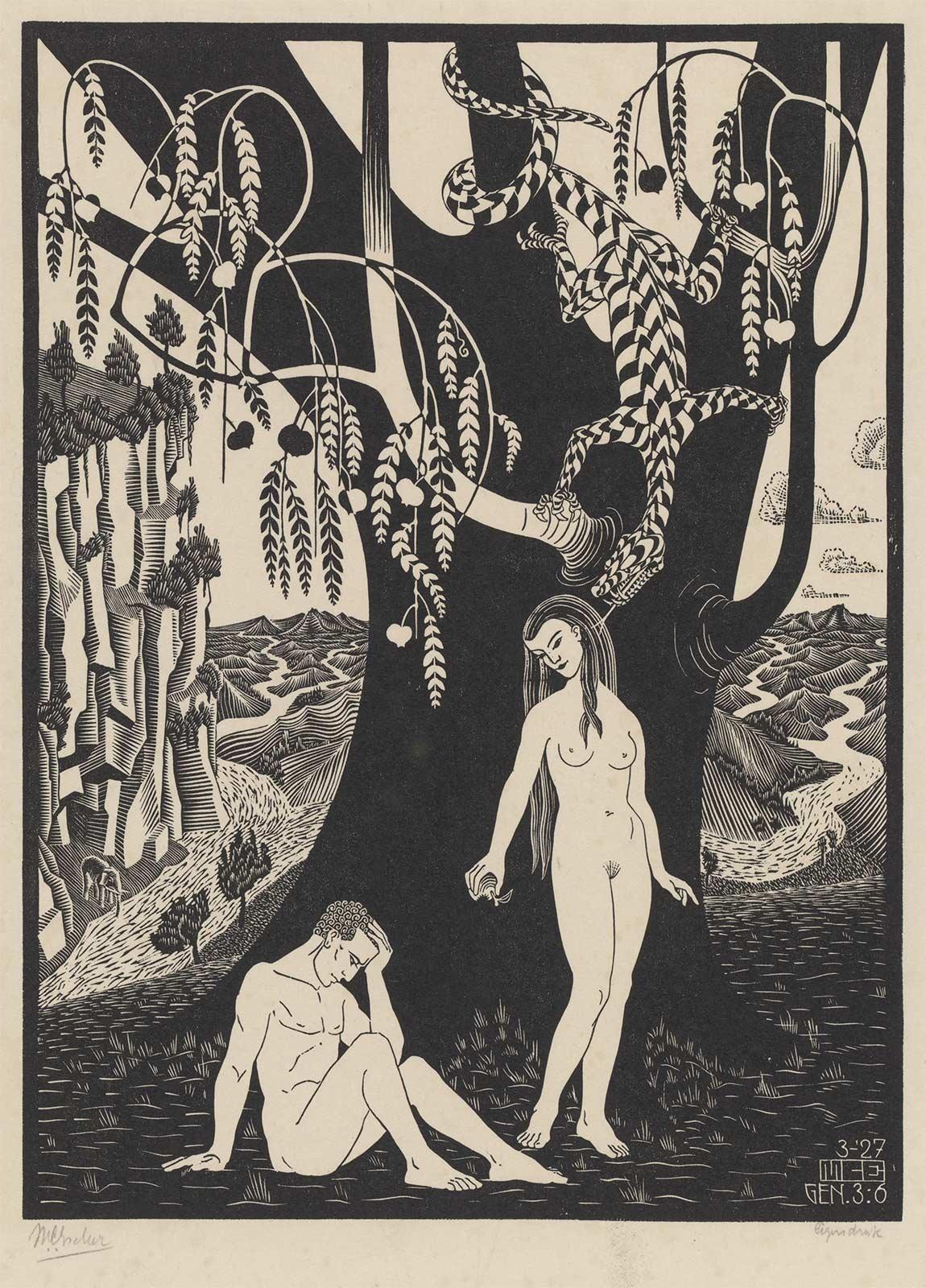
Escher shared more interests with Rembrandt, such as - though this was true of more artists - the Fall of Man. Escher even made two prints depicting this Biblical story, in 1920 and in 1927. In the first, Eve reaches for the apple while Adam turns away from her and covers his face with one of his hands. The image is dominated by a huge Tree of Knowledge in which the influence of the then-popular Art Nouveau can be recognised. The second print shows the subsequent scene in which Eve has taken the apple and offers it to the despondent Adam, who realises they have made a big mistake. Here, the snake has been replaced by a lizard-like reptile. The tree is still dominant, but serves mainly as a background. Both prints also show a desolate hilly landscape, the harsh world east of the Garden of Eden that will soon be their home.
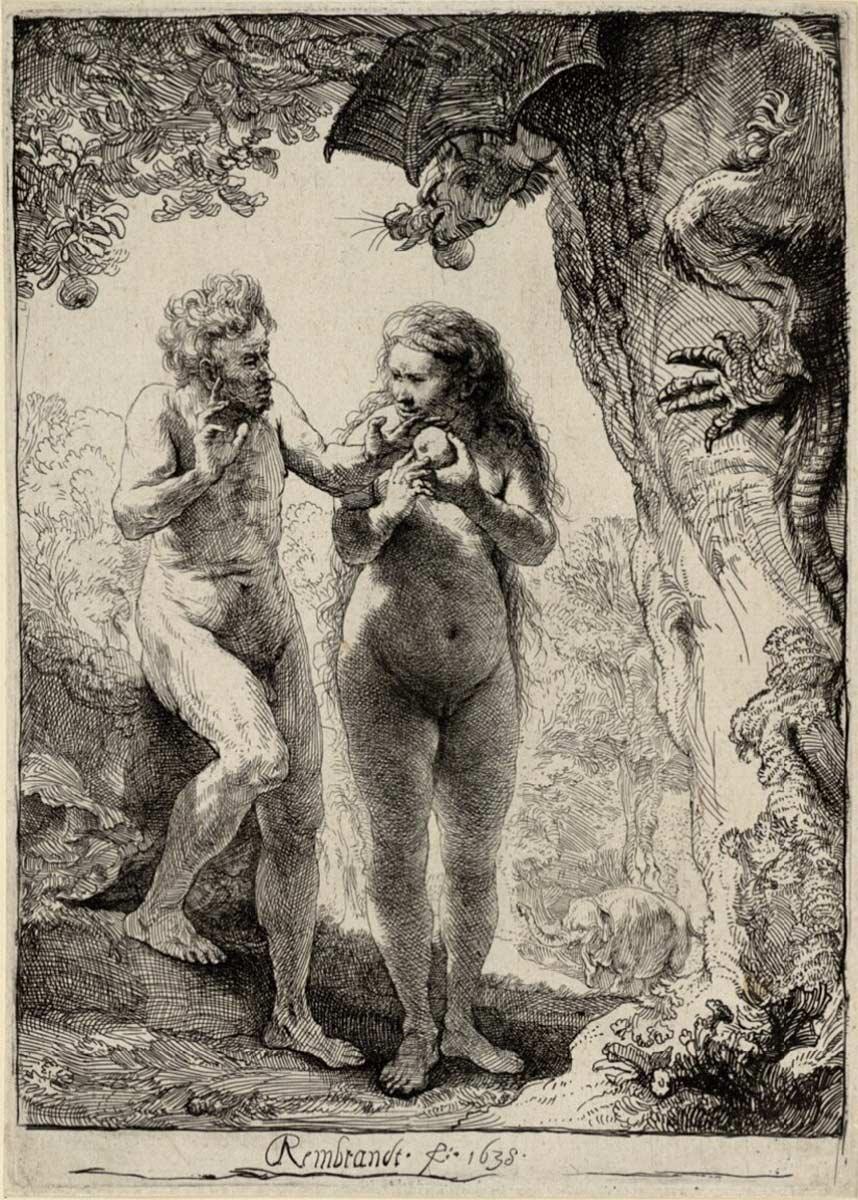
Rembrandt created an etching in 1638 showing the same moment as the one featured in Escher's 1927 woodcut. Rembrandt, a master at depicting people, concentrates on the characters Adam and Eve debating what to do. Here, too, Rembrandt opts for a dragon-like reptile instead of a snake. In doing so, both artists latch onto an interpretation of this Biblical story in which the animal that tempts Eve had legs and claws before the Fall. According to the Bible, it was only afterwards that the animal had to continue crawling as a snake on the ground, condemned to do so by God. Another striking similarity is the presence of an elephant in both prints. The animal symbolises piety and chastity, though also Christ, the only one who can raise those who are fallen. Thus the elephant serves as the counterpoint to the temptation of the apple and the weakness of Adam and Eve. Both Rembrandt and Escher must have been familiar with this symbolism.
Over the course of his career, Escher became increasingly captivated by Italian Renaissance artists, especially when he took up residence in Italy from 1924 onwards. His admiration for Rembrandt remained dormant, albeit still alive in the background, and when he visited the National Gallery in London with his friend Paul Keller in 1957 and came across a painting by Rembrandt, he enthusiastically wrote in his diary*:
Rembrandt (Hendrikje Stoffels) Female Portrait!!
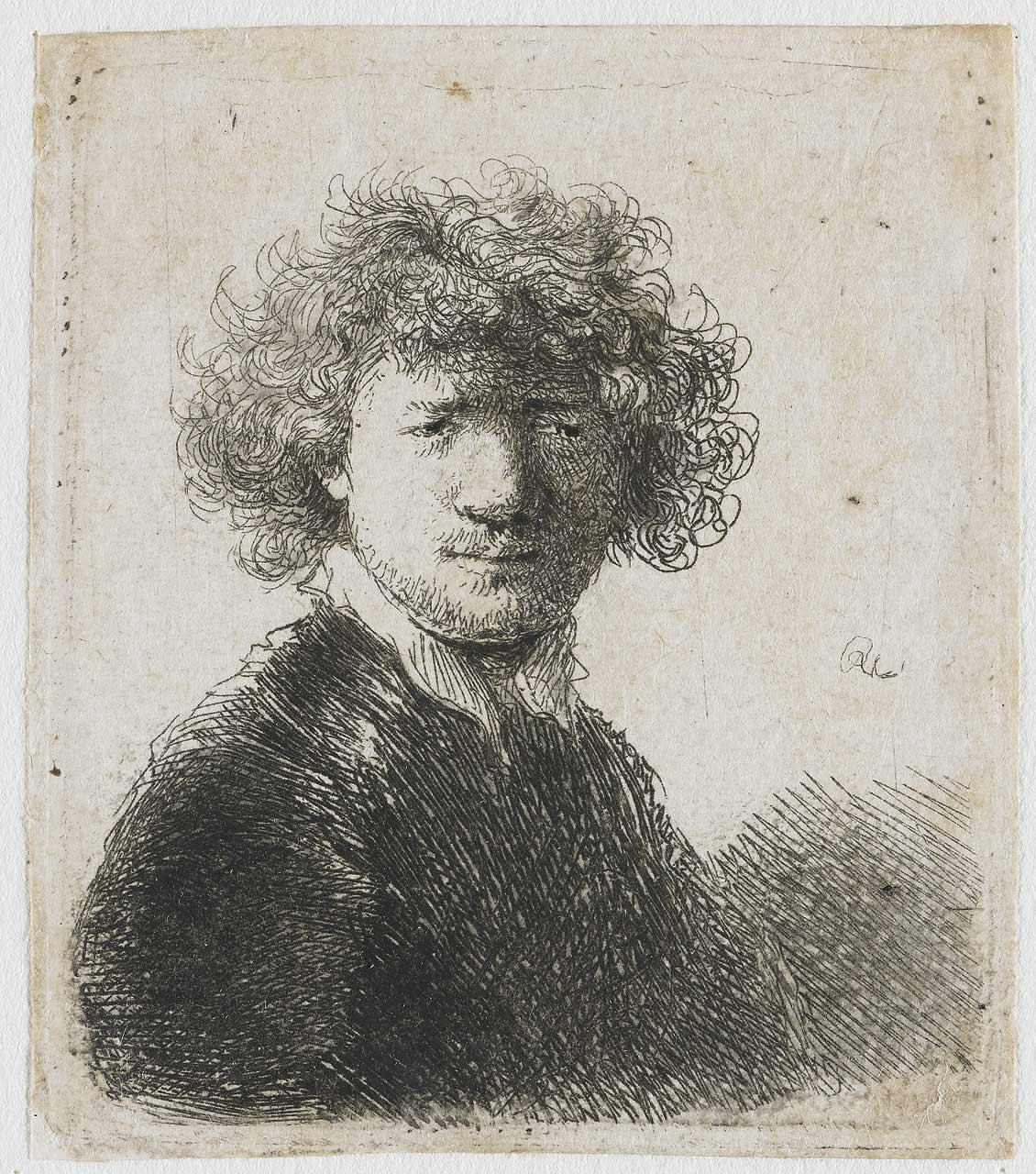
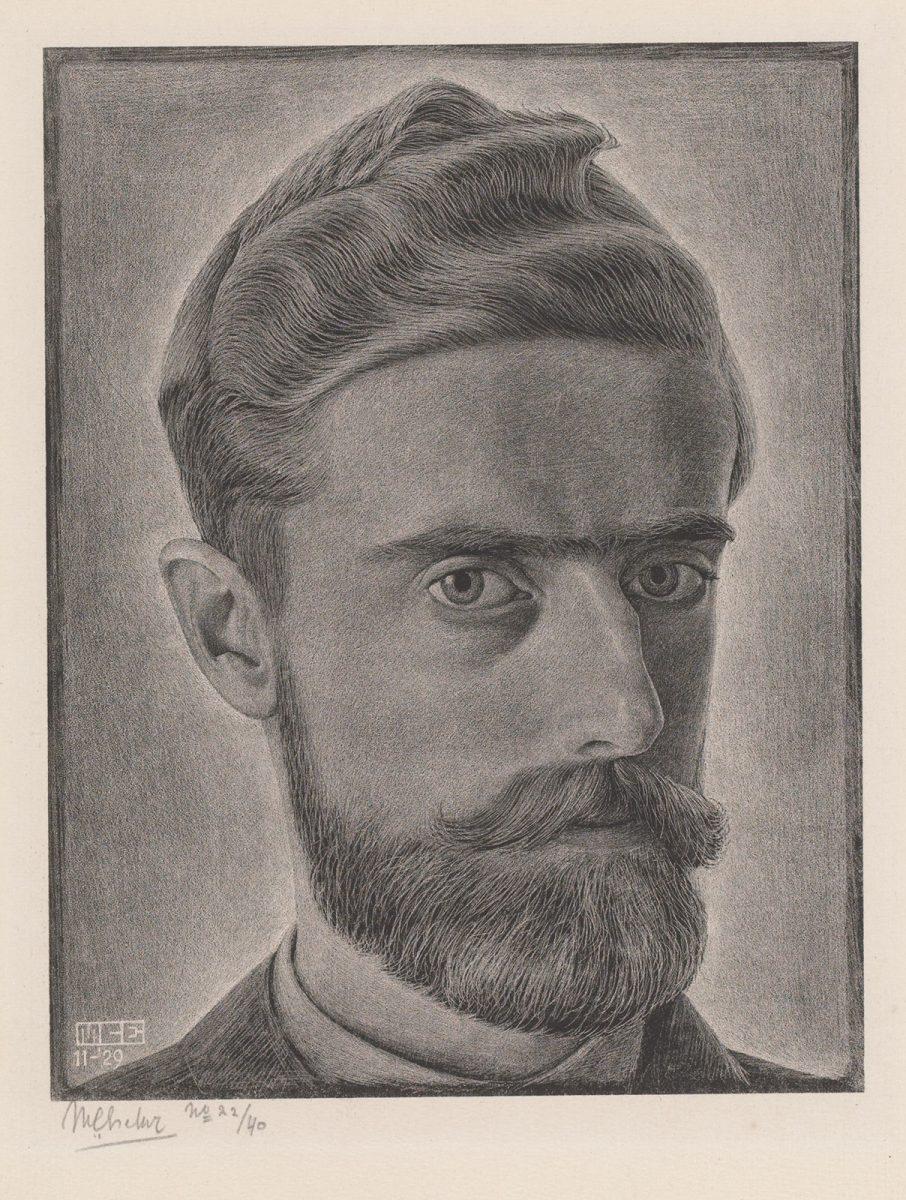
A love that the two artists shared with each other and, for that matter, with many other artists, is their habit of making self-portraits with some degree of regularity. Escher did so 12 times between 1917 and 1950 as prints, several of them in a convex mirror. The very first was a linocut he made as a 19-year-old. He was still so inexperienced that he did not cut his monogram in mirror image. He therefore rejected the work. Later, he did add the monogram in mirror image, but did not print it. It was printed posthumously. He was a quick learner, however, and the self-portraits from 1918 and 1919 attest to his progression. Escher may have created 12 self-portraits in print form, but Rembrandt surpassed him many times over. During his lifetime, he created some 80 self-portraits, 40 of which were paintings. Far more than was the case with Escher, these self-portraits give a glimpse into the artist's development and ageing process. If you line them all up, you can see Rembrandt changing before your eyes.
A final similarity is that both artists can be characterised as craftsmen. Rembrandt had learned the painter's trade as an apprentice and later became a member of the Guild of St. Luke as an artist from Amsterdam. He was an entrepreneur who made money doing commissioned portraits. Rembrandt was known in his time as the best portrait painter in the city, immortalising many wealthy Amsterdam residents. In his etched portraits, he mainly depicts acquaintances from his immediate surroundings and these are therefore more informal. Being portrayed by him did really mean something, though. Escher mainly created work for himself, but subsequently tried to sell it. He saw himself primarily as a graphic artist – a profession that required a lot of practice for him to master. However, Escher struggled with the word 'artist'. In a speech he gave when he was awarded the Hilversum Culture Prize in 1965, he reaffirmed this and referred to himself as a craftsman:
"If I am not mistaken, the words 'art' and 'artist' did not exist during the Renaissance and before: there were simply architects, sculptors and painters, practising a trade. Printmaking is another one of these honest trades, and I consider it a privilege to be a member of the Guild of Graphic Artists. […] I am a graphic artist with all my heart and soul, though I find the term 'artist' rather embarrassing. That is why, Mr Mayor (and this concludes my lecture), I would like to receive this prize as 'just' a graphic artist, if I can say it like this. I hope you approve of me accepting it like this."
Source
[*] Wim Hazeu, M.C. Escher, Een biografie, Meulenhoff, 1998, page 378

25 December 2022
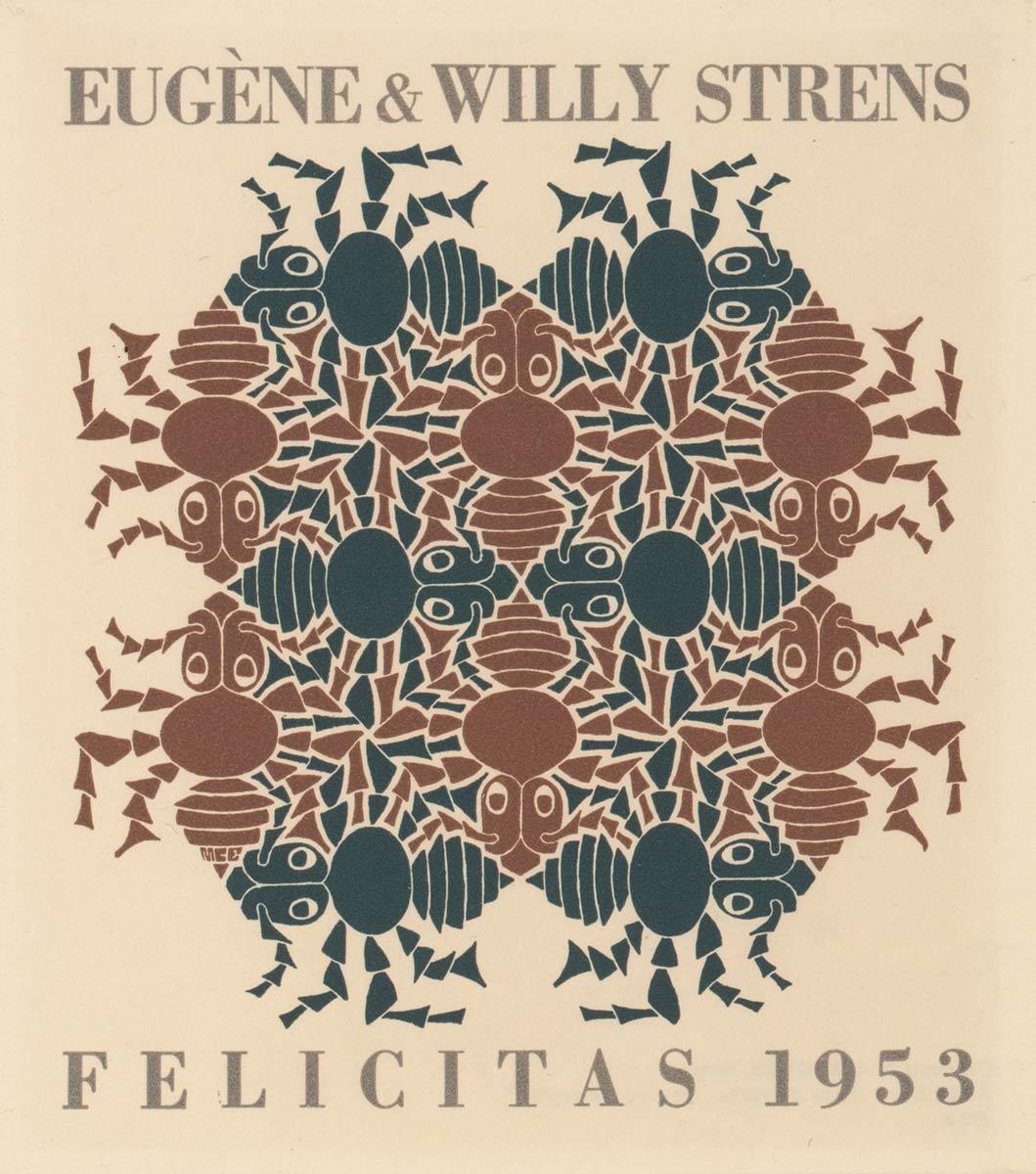
22 October 2022
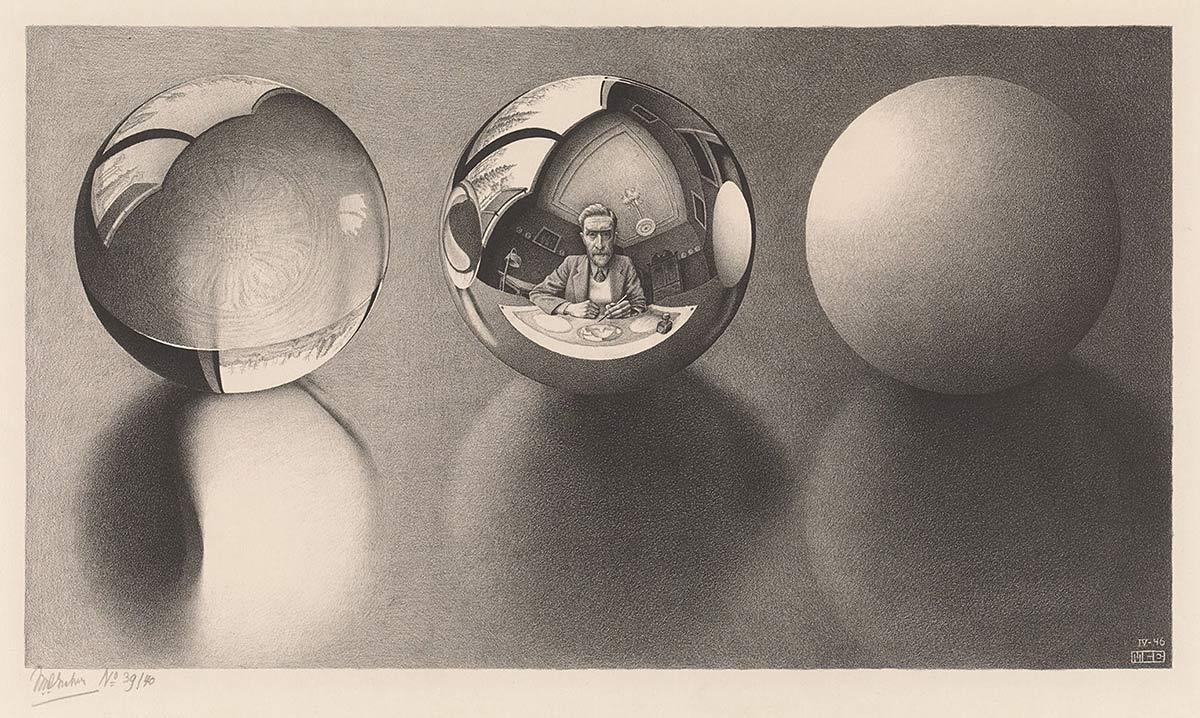
25 June 2022